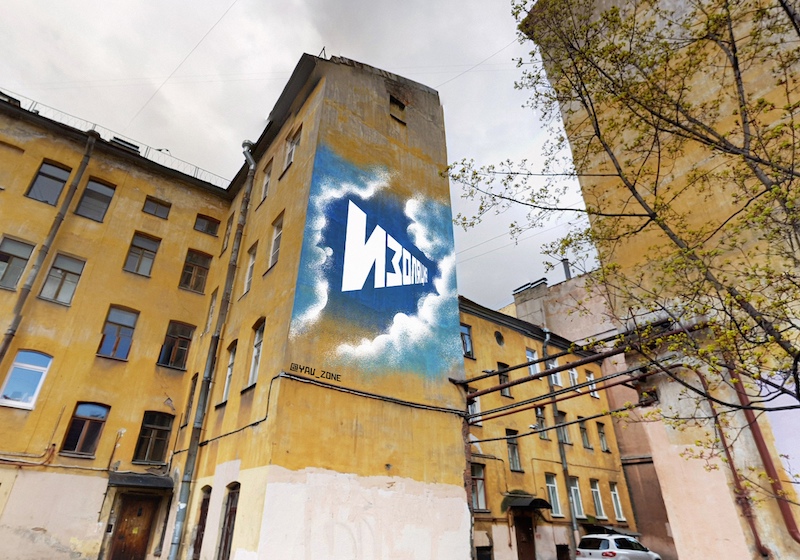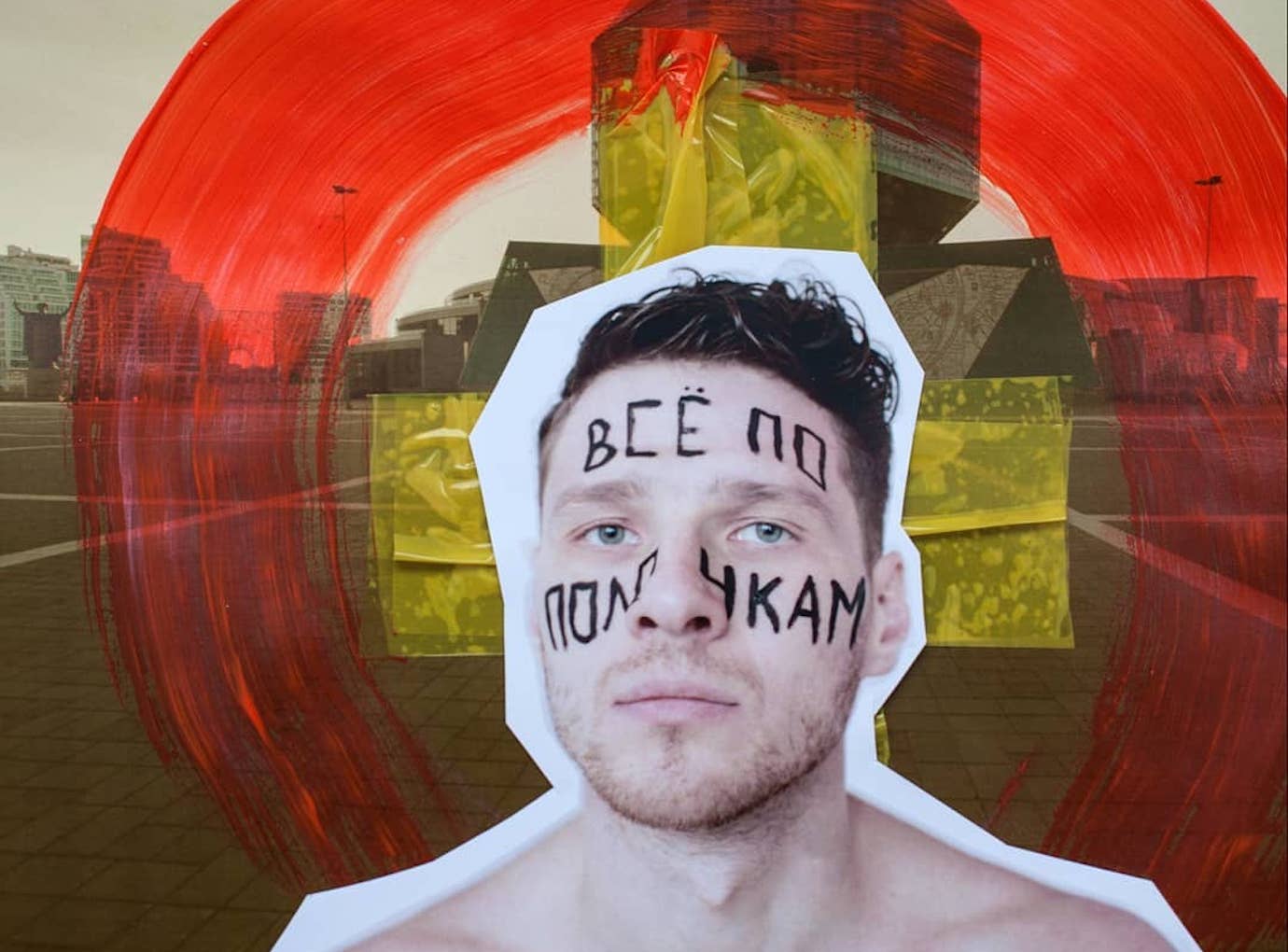Yav: the street art collective running out of patience in the fight for social change

Hours before Russian opposition protesters took the streets in mid-January, art collective Yav unveiled their latest artwork, Patience. Authorities covered the piece within hours — but not before it had already gone viral on social media, resonating with demonstrators across the country.
On 22 January 2021, the day before tens of thousands of Russians took to the streets to protest the jailing of opposition leader Alexey Navalny, a new mural appeared in the centre of St Petersburg. It displayed the easily recognisable image of a phone battery running out of charge: except this battery was not running out of electricity, but out of patience — the title of the work.
Created by street art collective Yav’, the piece was also a symbol against Navalny’s arrest four days previously. “We believe that Navalny’s arrest is illegal, and he should be released immediately. We have created this work at this point in time, because the events of the last few days have exhausted our patience,” the group said in a statement. “We want to live in a country with fair courts and law enforcement agencies. We want to live in a democratic, civil society. That is why we have created this work.”
Yav’ had conceived the work back in May 2020, but delayed creating it while they completed another long-term project. But like many other Russians, the arrest of the opposition figure had stretched their patience to its limits. Just nine hours after the work was completed, it had been painted over by the authorities — but not before it had been photographed and put online, taking on a second life on social media.
Patience in St Petersburg, before it was painted over by the authorities
While Navalny’s arrest may have been the impulse needed to produce Patience, Yav believes in art as a real catalyst for change. They fuse their graffiti and murals with activism, sometimes more explicitly, such as with Patience, and in other, more subtle ways. “We, as artists, can contribute to the development of civil society in Russia,” they explain.
For Yav, street art is the perfect medium to alter public perception and “draw people’s attention to problems that already exist” in society. It is no coincidence that their name, Yav, translates as “reality”. Their recent work has responded to issues of intellectual freedom, domestic violence, and more recently the COVID-19 pandemic. Most recently, the first two parts of Yav’s Russia triptych, painted on walls scattered through St Petersburg retell current affairs in the guise of a fairy tale, depicting Russia and Belarus as damsels in distress.
“For us, the main advantage is that works made on the streets are seen by a very large number of people,” the group say. “Creating art on the streets can communicate your thoughts and ideas to an audience that never goes to museums and galleries and would never see the work done on canvas.”
An artwork against domestic violence outside a shop called 'Big Family'. The woman is holding a sign which reads 'HELP'.
But it’s not just the potential for a large audience that draws the group to create on buildings and walls: illegality is the very essence of what Yav calls street art. It is a position which has put them at odds with many others on the Russian cultural scene.
“Street art is only that which is done without agreement, without any kind of permission, it is illegal, funded personally by the artist: for us, that is irrefutable,” the group say. “Any work that has permission, no matter who it is from, whether it is from the authorities or individuals, this is public art. Street art is always an intervention. It is work thought up by the artist alone and it is not dictated by anyone. Street art is always under threat from the police and it is work for which the artist is legally responsible.”
“Street art is about honesty. If the artist does it illegally, then it is clear that the work is really theirs, they really want to create it, and create it as they want”
St Petersburg’s Street Art Museum, located in a plastics factory in the city’s east, has become a particular target for contempt, with Yav accusing the independent institution of appropriating the genre. On 10 September 2019, the artists broke into the St Petersburg Street Art Museum and created several small interventions. One of the Yav’s founders, Anastasia, went on four guided tours of the museum, before returning four more times to plot a route into the museum complex undetected by museum staff or security. The small works that Yav created and produced throughout the exhibition space explored issues of migrant labour and the police, and were a contrast to the works exhibited in the museum’s permanent collection both in scale and theme. They particularly reject the museum’s use of the term “street art” for works created without risk. “Illegality is an important element of street art,” they say, “because the artist is responsible for their own work.”
An intervention at the St Petersburg Street Art Museum
Ultimately, Yav believe it is that accountability which is central to their ability to create real change through their artistic output. What they would call “public art” is seen as a watering down of this artistic medium: not only are there no legal consequences for artists, but institutions and financial involvement may reduce the social and political impact of the work. “Street art is about honesty. If the artist does it illegally, then it is clear that the work is really theirs, they really want to create it, and create it as they want,” they explain. “If a street artist creates a work on canvas, it doesn’t become street art. If we are commissioned to create a work on the street even if it is without the consent of the city, this doesn’t become street art. Even if someone just gives us an outdoor space to be creative, and the work is created by the artist without agreeing the layout of the work with anyone, this is not street art, it is all public art. The meaning of street art is the threat of sanctions, responsibility.” While aesthetics are important, for Yav, risk is the very essence of their work — and, ultimately, what makes it so powerful.
Street art is the perfect medium for this very moment: “It is honest,” they explain. “We are not politicians, we are artists, and express the opinions of ordinary Russian people.”


